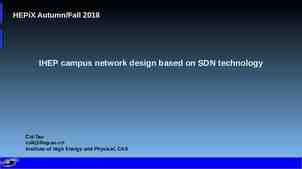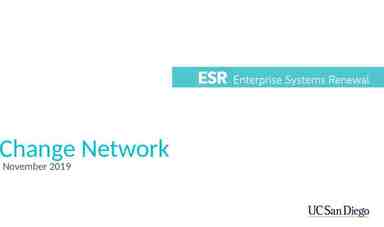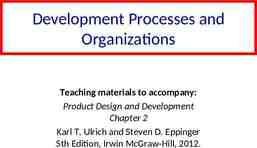CONTRACT MANAGEMENT UNDER PAM CONTRACT 2006 “AN ARCHITECT”S
47 Slides329.00 KB

CONTRACT MANAGEMENT UNDER PAM CONTRACT 2006 “AN ARCHITECT''S PERSPECTIVE” Prepared by Ar. Joseph Tan Meng Hooi October 2015

INTRODUCTION. With a Building Contract, you have ; 1. THE EMPLOYER, who will provide the site and pay for the construction of a Building for his use and 2. THE CONTRACTOR, who will build the Building for the payment received. Both the Employer and Contractor form the CONTRACTUAL PARTIES to the Contract.

INTRODUCTION Cont. The PAM Contract 2006, like all Building Contracts, attempts to be fair to both Contractual Parties by setting out their rights and obligations. To ensure that the Contract is administered fairly between both Contractual Parties, PAM Contract 2006 places the administration under a third party, namely the ARCHITECT.

INTRODUCTION Cont. This paper is not ambitious enough to attempt injecting the various management theories currently floating around into the administration of the Building Contract. The intent of this paper is much more basic and seeks to just high-light the areas where the Archtect is (compulsorily) required to step in under the Contract to perform his appointed role as the Contract's Administrator. Performance of this role, very simply put and in the writer's opinion, forms the basis of CONTRACT MANAGEMENT. For the purposes of simplicity, the Contract in the following paper refers to the PAM Contract 2006 (With Quantities).

PRE-CONTRACT PREPARATION. As per the title, this paper only seeks to look into the Architect's role during the management and administration of the PAM Contract 2006. Nevertheless, it must be remembered that there are obvious steps leading up to the entry of the Contractual Parties into the Building Contract.

PRE-CONTRACT PREPARATION. Cont. These steps incude (but are not restricted to) : - the compilation of information from which a prospective Contractor may formulate and submit an offer, - selection of the Contractors whom you would like to submit an Offer, - evaluation of the Contractors' offers, - clarification of their offers, - negotiations to ensure that the offers are the “best” available, - advising the Employer on the selection of the Contractor and - after selection, preparing to award the Contract.

PRE-CONTRACT PREPARATION. Cont. Although not a requirement, PAM Contract 2006 pre-supposes a competitive tender prior to arriving at the execution of the Contract. If a Building Contract is to be managed competently, it is only sensible that the steps leading up to contract such as the compilation of tender documents, the tender process, tender clarification, negotiation, evaluation and contract award be also managed competently with full awareness of any implications during the execution of the contract. The importance of the all these steps during the pre-contract preparation cannot be minimized and are deserving of a separate paper.

AREAS OF MANAGEMENT. Different Architects may categorize the areas of management differently but for this writer, the following categories have been chosen : A. The Management of INFORMATION. B. The Management of WORK PROCESS & CONDITIONS, C. The Management of QUALITY, D. The Management of PAYMENT & CASH FLOW, E. The Management of CHANGE, F. The Management of COMPLETION, G. The Management of CONTINGENCIES and H. The Management of DISPUTES.

Architects generally, neither pay for nor construct the buildings they work on. Apart from administering the Building Contract to ensure that works A. The Management of Information. get completed according to plan, the most important task of an Architect is in conceptualizing the building followed by producing and managing the information required to construct the works. The types of information to be managed may comprise (and are also not restricted to) the following : a. Information required to construct the works or to show how the works are to be constructed., i.e.; Contract or Construction Documents, the Works Programme, Architect's Instructions, etc.,. b. Information as to whether the works have been constructed correctly. c. Information as to the status of the works, i.e.; amount of work completed, whether the works are on schedule, the amounts due to the Contractor, etc.,. This section shall attempt to look into some of the above.

A. The Management of Information Contract Documents. Cont. - The Contract does not just comprise the Articles of Agreement, where the Contractural Parties indicate their acceptance but extend to a set of Contract Documents which Clause 3.1 specifies as the following : a. The Letter of Award. b. The above-mentioned Articles of Agreement. c. The Conditions of Contract. d. The Contract Drawings (as prepared by the respective Consultants). e. The Contract Bills. f. Any other documents which are to be incorporated into the Contract Documents.

A. The Management of Information. Cont. - It is the Architect's job to compile and check through all the above and issue them out to the Contractual Parties for the execution of the Contract. - In addition, the Architect is also required to supply two (2) further copies of the Contract Drawings and two (2) further copies of the Contract Bills to the Contractor, for them to plan and execute the work. PAM Contract curiously, only requires the Architect to supply these further copies after the execution of the Contract (Clause 3.3). It is the writer's practice to instead, look into supplying the Contractor with the above documents immediately after the issuance of the Letter of Award to allow the Contractor to have as much time as possible to plans for the works.

A. The Management of Information. Cont. - The Contract Bills should reflect the work as described in the Contract Drawings but should there be any errors in the Bills, either in terms of description, quantity or by omission, it is the Architect who has to correct such errors (Clause 12.2).

A. The Management of Information. Cont. Setting Out and Levels. - Amongst the items required to be issued by the Architect to the Contractor is all the necessary information to set out and determine the levels of the works (Clause 5.1). Once issued, the Contractor has to follow the above levels and setting out. Should there be any errors in constructing the works relative to the above, the Architect is empowered to either instruct that the errors be corrected or (subject to the Employer's consent), accepted subject to any Deductions.

A. The Management of Information. Cont. Custody of Tender Documents. - As noted previously, tender documents are prepared to enable a Contractor to submit a price but between the preparation of the tender drawings and the subsequent execution of the Contract, there may be changes to the design and specification. The tender documents, once having these changes incorported, shall form the basis of the Contract Documents., i.e.; Tender drawings may not necessarily be the same as Contract Drawings. Tender documents as such, form a valuable record of the steps leading up to the Contract and it is the Architect's job to keep copies of both The Tender and Contract Documents (Clause 3.2). .

A. The Management of Information. Cont. Statutory Requirements. - It has already been noted that the Contract Documents should have been checked and it's also assumed that the building arising out of these documents should be in full compliance with any statutory requirements. Compliance relative to statutory requirements remains the Architect's responsibility. Nevertheless, should there be any discrepancies or non-compliance relative to statutory requirements which the Contractor may discover, he may give written notice to the Architect who is in turn, now obliged to resolve such discrepancies (Clause 4.2).

Further Drawings and Details. A. Management of Information. Cont. - AsThe and when additional information may be required (either to clarify the existing design or to cater for any variation or changes), the Architect is again obliged to issue two (2) copies of such information to the Contractor (Clause 3.4). It must also be remembered that the Contract allows for the Contractor to apply for such information and once applied for (in writing), the Architect is obliged to issue such information within a period which “does not materially affect the progress of the works”, i.e.; the Architect has to issue the information in a manner which does not cause any delays to the Contractor.

A. The Management of Information. Cont. - The preceding pages looked at principally, information originating from The Architect (and Consultant Team). Nevertheless, there is also information originating from the Contractor which has to be managed, i.e.; shops drawings or as-built plans from specialist sub-contractors (Clause 3.10). Again, it is the Architect's job to ensure that the above is issued at the appropriate time and once issued, that it is checked.

A. The Management of Information. Cont. - Management of Information is not just the production and assessment of information between the Architect (as Contract Administrator) and the contractual parties. It is important to remember that the form and method of transmission of information is prescribed in the PAM Contract 2006. In its current form, all notices or communication are only recognised if they are physical documents (hard copies), delivered either by hand, post or fax (Clause 36). Transmission by e-mail or social media is not recognised.

B. The Management of Work Process & - It isConditions. the Contractor's job to plan and execute the construction and delivery of the works BUT nevertheless, it is the Architect's job to check and ensure that the above execution and delivery are inaccordance with the Contract. . - Documents like the Works Progamme (Clause 3.5) will normally detail out the Contractor's Work Process. It is the Contractor's job to prepare the Programme and although this programme does not form part of the Contract, it is the Architect's job to evaluate it to ensure that the process is feasible and meets the Employer's requirements – one of which may be the co-ordination of works by others whom may also be employed directly by the Employer.

- In addition to the scheduling of the works, the Architect is also empowered to have a say in theof staff employed by the Contractor to B. The Management Work Process & manage the works, such as the Site Agent (Clause 8.3). Conditions Cont. - It is also the Architect's job to ensure that the Contractor takes all precautions and indemnifies the Employer against any damage or injury to persons and property (Clause 18). This usually means that the Architect has to check and ensure that the correct insurance coverage (as required under Clause 19 and 20) are appropriately taken out. - Whilst site safety is mainly the Contractor's responsibility, it must remembered that as the Principal Submitting Person through the Street, Drainage & Building Act, the Architect cannnot escape from shouldering part of this responsibility. .

- Very often, the work process requires the appointment of specialist sub-contractors (whose nomination is allowed for under Clause B. The Management of Work Process & 27). Cont. It isConditions the Architect's job to advise the Employer on the allowance of any required Prime Cost (PC) Sums, the subsequent identification and selection of these sub-contractors and their nomination in accordance to the Contract. - Although a Nominated Sub-Contractor (NSC) is under the direct control of the Contractor, the Architect is required ; a. to ensure that his administration of the Contract does not jeopardize the sub-contract and b. to fulfill his obligations to both the contractor and the Nominated Sub-Contractor,such as the acceptance of a NSC's work and the notification of any sums due from the Contractor to the NSC. .

are built in accordance to the Contract, i.e.; the Employer gets what he pays for. - The Contract facilitates the Architect in carrying out this task by : C. The Management of Quality. a. giving him access to the works or workshops and factories where parts of the works are being carried out (Clause 9.1), b. by having Site Staff to inspect the works (Clause 10), c. by empowering the Architect to ask for vouchers or any other evidence to substantiate the quality of materials (Clause 6.2) and d. empowering the Architect to ask for samples or the opening up of any works (Clause 6.3). . .

- If the works or materials employed are NOT in compliance with the C. Contract, The Management the Architect is further ofempowered Qualityto issueCont. instructions for the removal of any materials, demolition of any works as well as the rectification of such works (Clause 6.5). The Architect is also empowered to accept works which are not in compliance subject to the imposition of an appropriate set-off (Clause 6.5). . .

If these progressive payments are jeopardized, a Contractor may not be D. The Management of Cash Flow. able to finance the remaining works, thus in turn, jeopardizing the remainder of the works. - Under the PAM Contract 2006, the Contractor is required to submit his progressive claims at set intervals for the Architect to evaluate. - Upon evaluation, the Architect is required to certify the amounts due to the Contractor by issuing an Interim Certificate. - Upon receipt of such an Interim Certificate, the Employer is then required to honour the Certificate by paying the Contractor within the period of honouring certificates. . . .

- As the issuance of Interim Certificates ultimately involves the subject of D. The Management of Cash Flow Cont. money, it is both a contentious and important issue – important enough that it deserves a paper of its own. For those who are intereted in finding out more on this subject, they may refer to the writer's paper entitled “Architect's Certification under PAM Contract 2006”. . . .

Nevertheless as seen earlier when discussing the possible differences between tender and contract drawings, change is veryoften inevitable with differences also possibly occuring between the Tender, Contract E. The Management and Construction drawings. of Change. PAM Contract 2006 acknowledges the inevitabilty of these changes which result in “alterations or modifications of the design, quality or quantity of the Works” by empowering the Architect to issue instructions ordering such “Variations (Clause 11.2)”. The issuance of such instructions for Variations may only take place during Construction, i.e.; before the issuance of the Certificate of Practical Completion UNLESS such a variation is required by a Statutory Authority or Service Provider (Clause 11.3). . .

has to assess the impact such variations may have on the progress of the works, the rights of both the Contractual Parties and advise them accordingly. E. The Management of Change Cont. - Should the instruction for a variation be issued, resulting in alterations or modifications of the design, quality or quantity of the Works, the Architect has to ensure that the Contractor is paid (or the Employer is compensated) accordingly by valuing the work arising from the variation. . .

- The valuation of such variations follow strict rules whch identify whether the work is of a simlar character to that already described in Contract and if it is of a similar nature, whetherCont. the conditions under E.the The Management of Change which the work is undertaken is also similar to that already described in the Contract (Clause 11.6). Where the work is not similar, the Contract allows for valuations at “fair market rates”, the use of daywork rates or valuations based on actual cost (Clause 11.6(c) & 11.6(d)). . .

- The process of completion and subsequent possession is defined under the Contract as “Practical Completion”. F. The Management ofinCompletion. - Practical Completion may occur a single stage, i.e. ALL the Works are completed and handed over in a single stage OR, it may occur in multiple stages. - The stages may not have been planned for prior to entering into the Contract, i.e.; as with Partial Possession (Clause 16.0) . . . OR alternatively, the stages may have been planned for with allowances being made in the Contract, i.e. as with Sectional Completion (Clause 21.3).

- Partial Possession under the Contract, may only occur with the Contractor's consent UNLESS : F. The Management of Completion Cont. a. the Works are delayed and the Architect has already issued a Certificate of Non-Completion and. . . . b. such partial possession by the Employer shall not disturb the progress of the Contractor to complete the remaining works.

Upon receipt of this notice, the Architect has to evaluate this notice and F.within The 14 Management days, he has to eitherof : Completion Cont. a. reject the notice by giving a written notice in reply to the Contractor, specifying the grounds for such rejection OR b. where there are minor defects which do not affect the Employer enjoying full use of the Building, he may issue the Certificate of Practical Completion upon receipt of the Contractor's written undertaking to make good these minor defects OR . . . c. he may issue the Certificate of Practical Completion, if the Works are complete and there are NO defects.

- The responsibility in determining whether the Works have reached Practical Completion lies solely with the Architect. F. The Management of Completion Cont. . . . Although the decision as to whether the Works are practically completed rests on the Architect's opinion, this has to be an opinion which is arrived at based on the factual conditions on site and whether the Employer may enjoy the full use of the Building according to its intended use.

a. issuance of a Certificate for the release of the 1 half of the retention sums, F.b. The Management of Completion Cont. adjustment of the retention sums, liquidated damaged and Performance Bond where Practical Completion involves Partial Possession or Sectional Completion, c. commencement of the defects liability period for the discovery (and making good of any latent defects) and d. commencement of the period for settling the Final Account. . . .

- Just as Practical Completion is based on the expression of the Architect's opinion, the determination as to whether a building fault or damage is a bona fide defect for which a Contractor is liable shall F.also The Management ofopinion Completion Cont.be arrived be based on the Architect's which in turn, should at objectively and be based on fact. . . .

made good and certified with a Certificate of Making Good Defects followed by the issuance for a Certificate for the release of the balance of the retention sums, F. The Management of Completion Cont. b. the Final Account has been settled (within the “Period to complete the Final Account”) and FINALLY, c. upon the issuance of the Final Certificate. . . .

PAM Contract 2006 recognizes the inevitability of this and attempts to provide a basis for planning for the unexpected and unintended. F. The Management of Contingencies. - Some of the unexpected and unintended events provided for in the Contract are the perils listed under Clause 20 which range from fire and theft, through to natural disasters like earthquakes or tsunamis to events such as riots or civil commotions. As noted earlier, it is the Architect's job to ensure adequate insurance for the Works for all the above eventualities. . . . - Whilst it is the Contractor's responsibility to make good or repair any part of the Works which may have been damaged, it is the Architect's job to ensure that any money received under an insurance claim, is paid out to the Contractor at the appropriate time.

Hostilities (Clause 31), the sustaining of War Damage (Clause 32) or the discovery of Antiquities (Clause 33) on the site. F. The Management of Contingencies Cont. - It is sincerely hoped that all Architects never have to manage contingencies such as the outbreak of hostilities but should the need ever arise, they need to be aware of the role they are required to undertake. - As a young, developing nation, the discovery of antiquities in a Malaysian context is perhaps a rarity but the title of Clause 24; “Antiquities” can be seen as a misnomer as it also covers the discovery of fossils and “other objects of interest and value”. . . .

The delays may arise from the Clause 20 perils, war damage of the discovery of Antiquities as previously discussed or it may be a result acts of omission or commission by the Architect, Consultants, F.of The Management of Contingencies Cont. Employer, Contractor, Nominated Sub-contractor, Statutory Authority or Service Provider. Should the delay be due to a “relevant event” (as detailed under Clause 23.8), a Contractor may be entitled to claim for an Extension of Time. Being entitled to an Extension of Time does not automatically mean that such an extension will be granted. Under the Contract there are specific procedures which have to be followed by firstly, the Contractor and secondly, the Architect. . . .

The submission of this notice followed by the subsequent submission F.ofThe Cont. detailsManagement of the relevant eventof andContingencies delay and the assessment of such information have to also follow a specific time frame. The rationale for all the above steps is to ensure that the Contractor continuously monitors his own progress and that all delays are dealt with as soon as reasonably possible. . . . Failure to follow the procedure and time frame may either cause a Contractor to lose his rights to claim for an extension or lead a Contract to suffer from time being set at large.

Employer that any interference on their part in the assessment and granting of an extension constitutes a breach of Contract. F. The Management of Contingencies Cont. - Should an extension be granted with the issuance of a Certiicate for An Extension of Time, setting a new completion date, the Architect should also ensure that all affected parties such as the Employer, Consultants and Nominated Sub-Contractors are informed and that all insurances or Performance Bonds are extended to cover the new completion date. An Architect should also ensure that the Contractor endeavours to complete the Works as soon as possible. One way of checking on this would be request for a revised Works Programme based on the new Completion Date. . . .

- Apart from being granted additional time to complete the Works, a Contractor may have also suffered additional expense or losses arising F.from The Management of Contingencies Cont. the delay. - The Contract allows for the Contractor to claim under certain circumstances (as set out under Clause 24.3) for such losses or additional expenses (Clause 24) but as with the process of claiming for an extension of Time, there are set procedures and time frames to be followed by the Claimant and the Architect as the Contract Administrator. . . .

- Should the Works remain uncompleted on the Completion Date and if the Architect is of the opinion that it ought to have been completed, are no grounds for the granting of an extension of Cont. time, the F.i.e.;there The Management of Contingencies Architect is obliged to issue a Certificate of Non-Completion. This Certificate is of extreme importance as : a. without its issuance, time may be set at large and . . . b. an Employer may only claim for Liquidated Damages upon its issuance (Clause 22)

- Another set of possible contingencies which may occur is the Insolvency of either the Contractor (Clause 25.3) or Employer (Clause F.26.3). The Management of Contingencies Cont. Strictly speaking, once either of the Contractual Parties are declared insolvent, the Contract shall no longer be able to proceed and should be terminated. . . . As the Contract Administrator, this termination process has to be managed in accordance with the Conditions of Contract to ensure that the rights of the Contractual Parties are maintained.

- Even without disputes, breaches of Contract may still occur and such breaches of the Contract may result in suspension of the Works by a Contractor or Determination ofof a Contractor's Employment by an G. The Management Disputes. Employer OR Determination by an Contractor of his own Employment. The Grounds for such determination by either Contractual Party are clearly spelt out (Clause 25.1 and Clause 26.1) and should either party decide to exercise their rights, the Architect as Contract Administrator has to ensure that these rights are exercised correctly. . . . Once exercised, the Contract Administrator has to ensure that the determination procedures are adhered to in order to ensure that the determination is equitable and that the accounts arising from the contract and determination are finalized fairly.

such dispute by the appointment of an independent third party through the process of : G. The Management of Disputes. a. Mediation (Clause 35) and b. Adjudication and Arbitration (Clause 34). - Although the above are dependant on a third party, the utilisation of any of the above Alternative, Dispute Resolution Procedures (including the appointment of either the mediator, adjudicator and arbitrator) has still to be in accordance to the procedures set out in the Contract. . . .

- Although the provisions for Adjudication and Arbitration are clearly spelt out, it must be noted that the introduction of recent federal legislation may affectManagement the utilisation and validityof these provisions as specifically G. The of Disputes Cont. allowed for under PAM Contract 2006. All Architects as such,are advised to keep abreast of any future developments and pronouncements with respect to these dispute resolution clauses. . . .

seek to briefly high-light some of these areas. The ultimate intention of this brief look though is to spur all Architects CONCLUSION. to examine (or review) their role in managing the Contract with much greater detail, rigour and precsion. T H A N K Y O U. . . .






